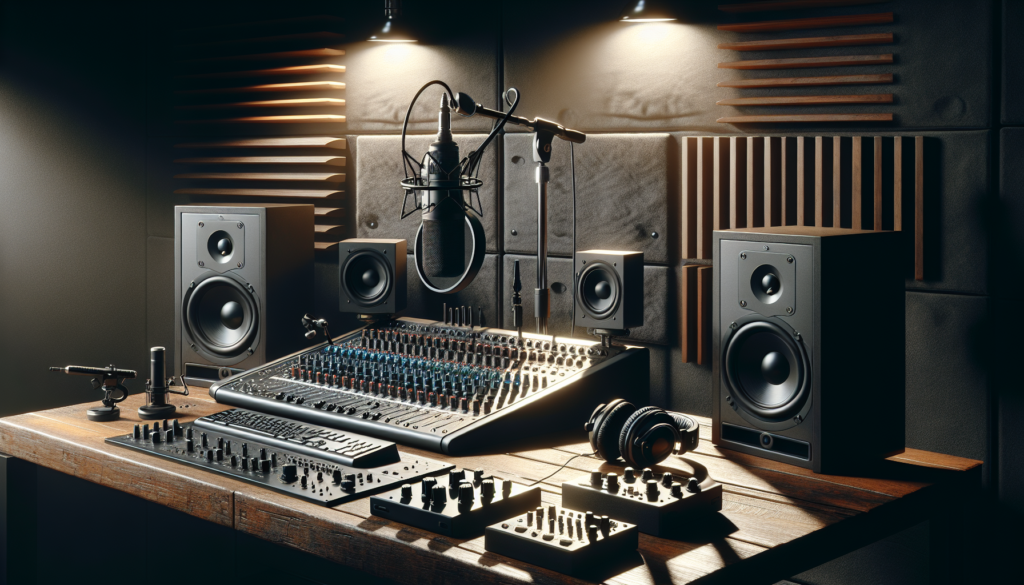Once you’ve finished recording your song, the next steps are mixing and mastering—the processes that shape your track into a polished, professional-sounding piece of music. These may sound intimidating at first, but with the right approach, any beginner can start learning how to make their tracks sound clean, balanced, and ready for release.
This guide will walk you through what mixing and mastering are, why they matter, and how to begin doing both—even if you’re working from your bedroom studio.

What is Mixing?
Mixing is the stage where you take all the separate elements of your song—vocals, drums, guitars, synths, and so on—and blend them together into a cohesive whole.
You’ll adjust volume levels, apply EQ, add effects, pan sounds left or right, and clean things up so nothing clashes. Think of mixing like cooking: you’ve got your ingredients recorded, now you’re seasoning and arranging them to taste.
Key Goals of Mixing:
- Make every instrument clear and balanced
- Create space so elements don’t fight each other
- Add depth and interest with effects
- Prepare the track for mastering
Basic Mixing Tools:
- Faders: Control volume for each track
- Pan knobs: Move sounds left or right in the stereo field
- EQ (Equalizer): Boost or cut frequencies (like removing muddiness or brightening vocals)
- Compression: Controls dynamics to make things more consistent
- Reverb & Delay: Adds space and texture
- Automation: Changes levels or effects over time for creative control
Beginner Tips for Mixing:
- Start with volume balancing—get a rough mix just by adjusting levels
- Cut low frequencies where they’re not needed (especially on vocals or guitars)
- Avoid boosting too much; cutting is usually better for clarity
- Keep your ears fresh—take breaks and check your mix on different speakers or headphones

What is Mastering?
Mastering is the final polish. It’s the process of taking your final stereo mix and enhancing it for distribution. While mixing focuses on individual tracks, mastering works on the whole song as one file.
Mastering makes sure your song sounds good on any system—car speakers, phones, earbuds, clubs—and at consistent loudness with other commercial tracks.
Key Goals of Mastering:
- Make the track loud enough without distorting
- Balance frequencies across the full mix
- Add cohesion and final enhancements
- Prepare the file for streaming, CDs, or vinyl
Basic Mastering Tools:
- EQ: Final tonal balance adjustments
- Multiband Compression: Controls dynamics in different frequency ranges
- Limiter: Prevents distortion and raises overall volume
- Stereo Enhancer: Slight widening of the stereo image (used sparingly)
- Metering Tools: Helps you match levels and keep things in check
Beginner Mastering Tips:
- Always master a mixed and exported stereo file, not your session
- Use reference tracks—listen to professionally mastered songs and compare
- Don’t overdo it—subtle changes go a long way
- Focus on transparency—you want to enhance the mix, not change it
Mixing vs Mastering: What’s the Difference?
| Feature | Mixing | Mastering |
| Focus | Individual tracks (vocals, drums) | The entire stereo mix |
| Tools | EQ, compression, reverb, panning | EQ, limiter, stereo imaging, metering |
| Goal | Make the song sound good | Make the song sound finished & loud |
| When it happens | Right after recording | After mixing is complete |
Can You Do Both Yourself?
Yes—but it takes practice. Many producers mix and master their own music when starting out, especially in home studios. Just keep in mind:
- It’s hard to master your own mix objectively
- Your ears can get tired—take breaks
- If possible, ask a friend to master your mix or master it later with fresh ears
Here are few resources to understand more about what is mixing and mastering in depth.
LANDR
Understanding the final stages of music production
IZotope
Audio Mastering Tips & Tutorials
Sound On Sound
Mixing Essentials
Over time, you’ll get better at knowing what your mix needs and how to finish your songs confidently.
Final Thoughts
Mixing and mastering are part art, part science. They’re essential steps to take your raw recording and turn it into a polished track that sounds great everywhere. As a beginner, focus on learning the basics, trust your ears, and don’t be afraid to experiment.
The good news? You don’t need expensive gear or a fancy studio to start—you just need a good pair of headphones, a DAW, and a willingness to learn.
Every great producer started with messy first mixes. So keep at it—you’ll get better with every song you finish.